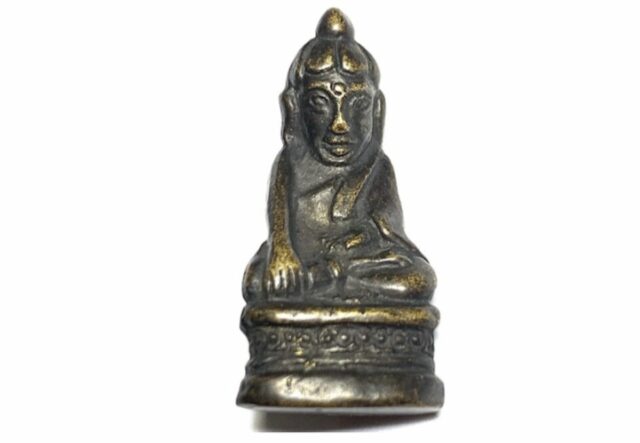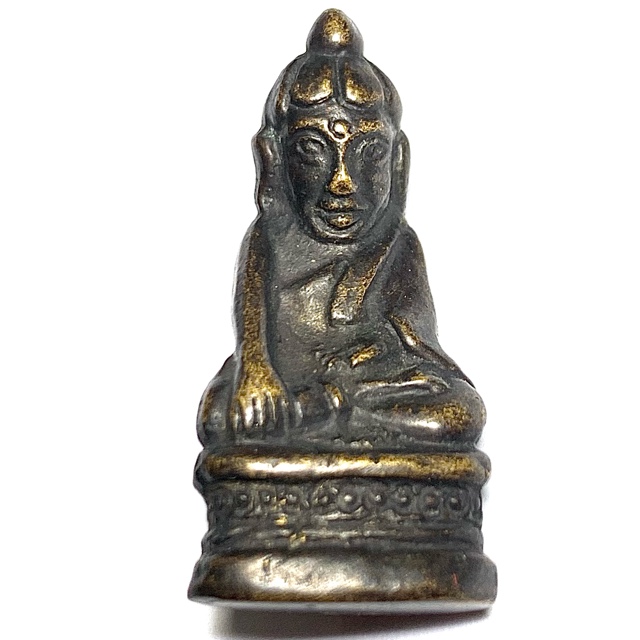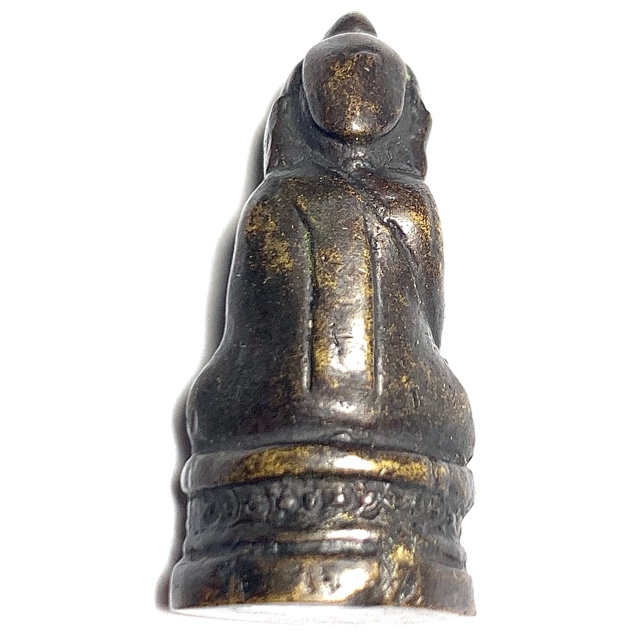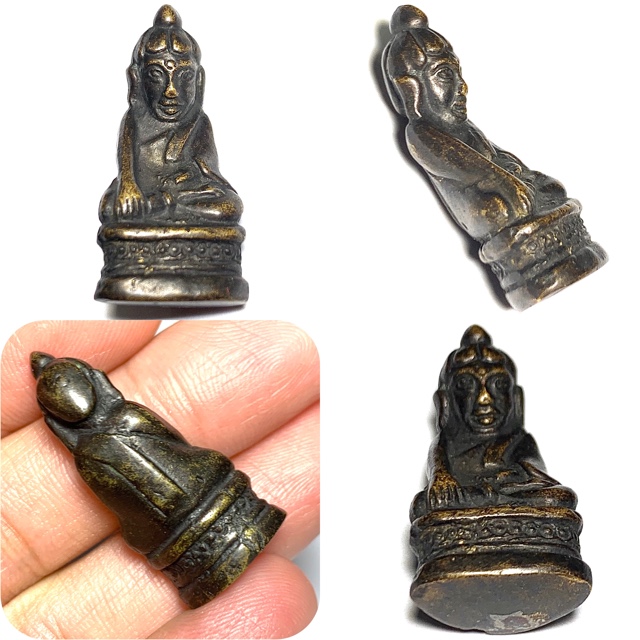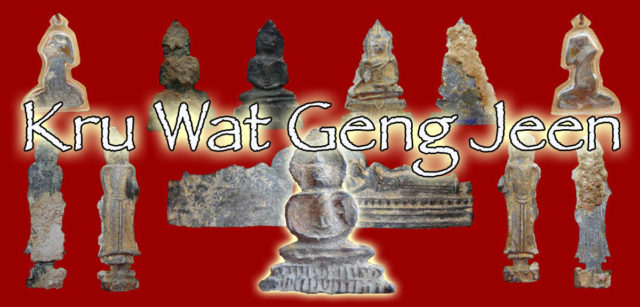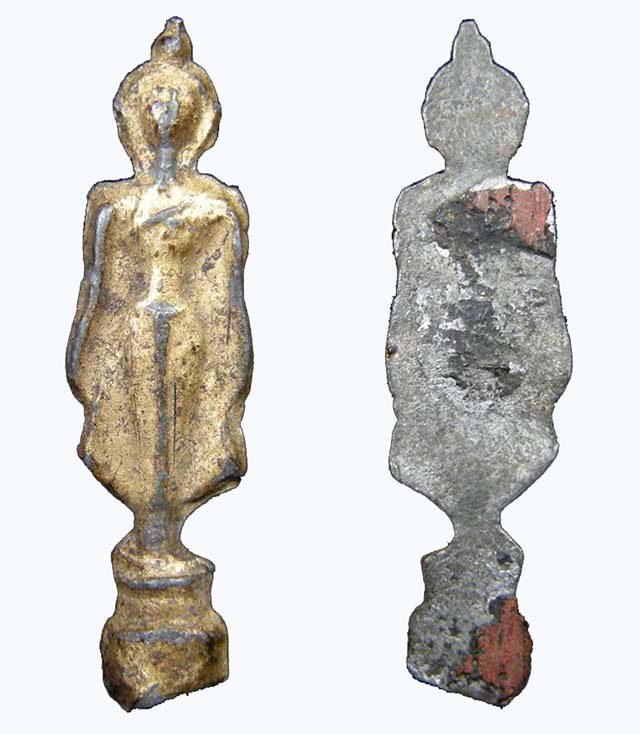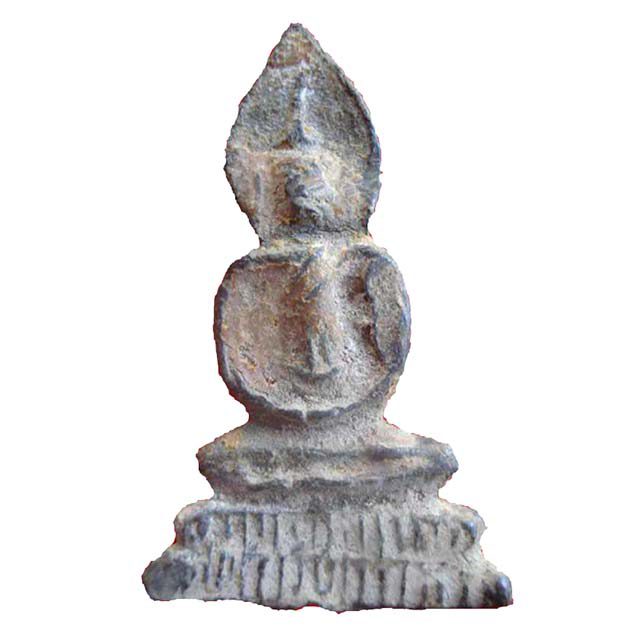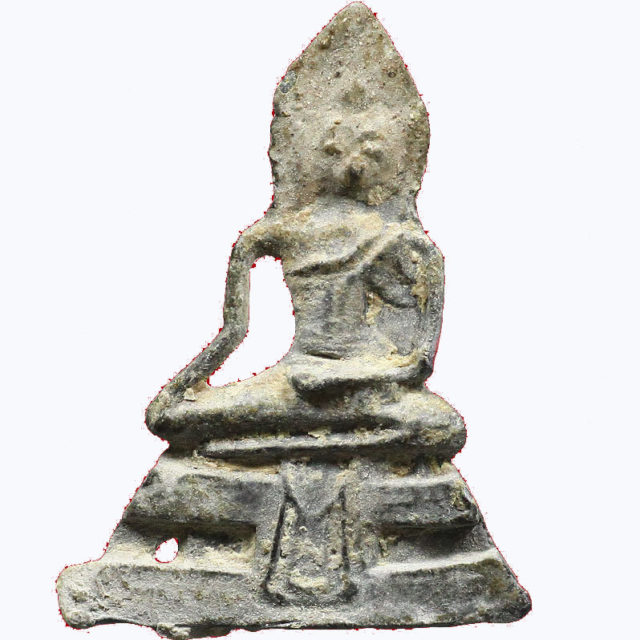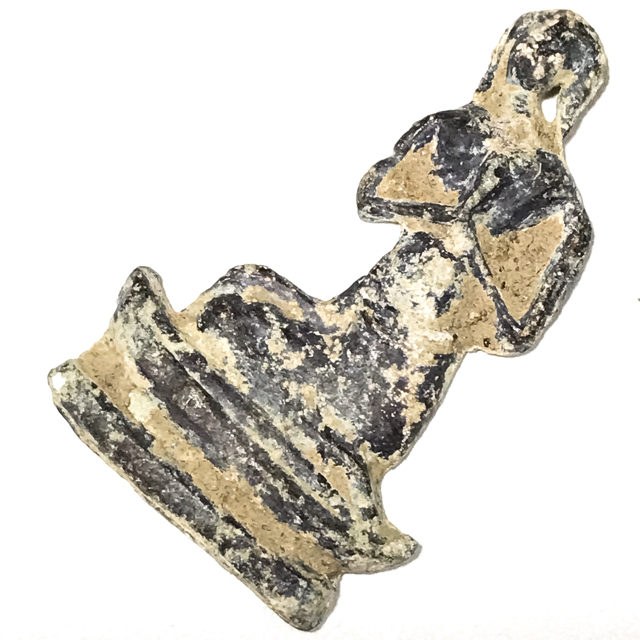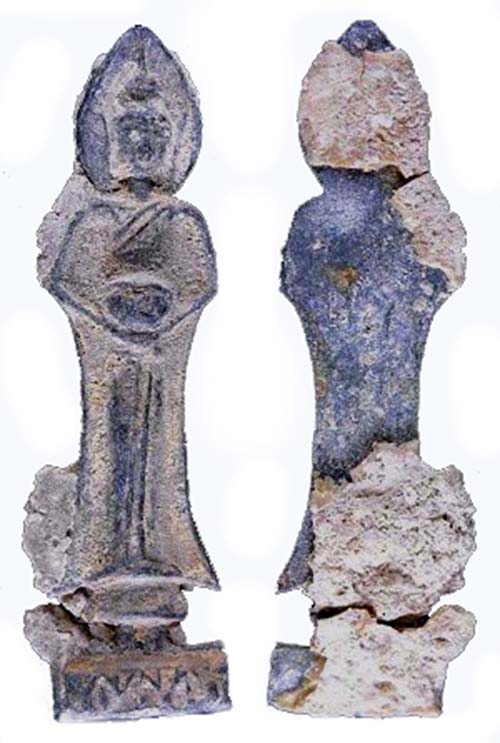The Pra Kring Upakut Muang Ngay Loi Ongk Statuette Buddha was released in the year 2512 BE, at Wat Pra Singh, in Chiang Mai, North Thailand. The Pra Kring Upakut was cast and forged in Sacred Chanuan Alloy, along with the equally famed and sought-after Pra Ruang Rang Pern, Rian Somdej Pra Naresuan Maharaj Royal King Coin, and Pra Chayawat Naresuan amulets. At that time, the blessing ceremony for these amulets became the largest mass blessing ceremony of Northern Thai Lanna Amulet History, funded and organised by Commanding Police officer, and Mayor of Chiang Mai Province, Pan Tamruaj Aek Nirand Chaynam. In addition, His Majest King Bhumipol Adulyadej Rama 9 attended the ceremony to perform the ‘Te Tong’ gold pouring ceremony part of the forging ritual of the amulets.
Many Great Master Monks from around Thailand were invited to come and assist in the empowerment and blessing of the amulets, which were made in order to raise funds to build the Pra Naresuan Stupa Chedi Reliquary as a Memorial Monument to the first King of Thailand, who united the Kingdoms of the various city states to defeat the Burmese, and unite the nation. Once the funds were raised after release of the amulets, a Chedi Stup was built dedicated to King Naresuan Maharaj, at Mueang Ngay In Chiang Daw, as a monument of the city. The statuettes were made from Nava Loha (9 Sacred Metals), in numbers of 2512 amulets only, making these amulets extremely rare to find in the present day. The Grand Putta Pisek (Buddha Abhiseka), was performed on the 15th January 2512 BE at the Worawiharn Pra Singh Wora Maha Wiharn shrine-room in Chiang Mai.
Among the great number of 40 Powerful Master-Monks present to empower the amulets in the Putta Pisek ceremony, were; Oor Tan Klai of Wat Suan Khan, Luang Por Nam of Wat Don Sala, Luang Phu To of Wat Pradoo Chimplee, Luang Por Nor, of Wat Ta Ruea, Luang Por Tiam, of Wat Gasatrirat, Luang Por Tong Yoo, of Wat Mai Nong Pra Ongk, Luang Por Tiang, of Wat Khao Roop Chang, Luang Por Pring, of Wat Bote Goeng Tanu, Kroo Ba Wang, of Wat Ban Den, Luang Por Chaem, of Wat Wang Daeng Nuea, Luang Por Chern, of Wat Dtamnak Nuea, Luang Por Mueang of Wat Ta Haen, and the great Luang Por Tim, of Wat Chang Hai.

For this reason, this edition of mulets is seen as highly sacred and powerful, for the blessings of these Great Masters and many others, with a powerful and Grand Ritual Ceremony. The Pra Kring Naresuan, Upakut, are seen as the number one Pra Kring amulets of the Lanna Region of this Era. The Pra Kring Naresuan is known around the Nation for its power and sacred blessings, and rarity, and is revered, and soigh-after by many Thai Buddhist People. Although for most, this is a mere hope and dream, for the chances of encountering one, are far and few between, due to the small numbers made of each amulet.
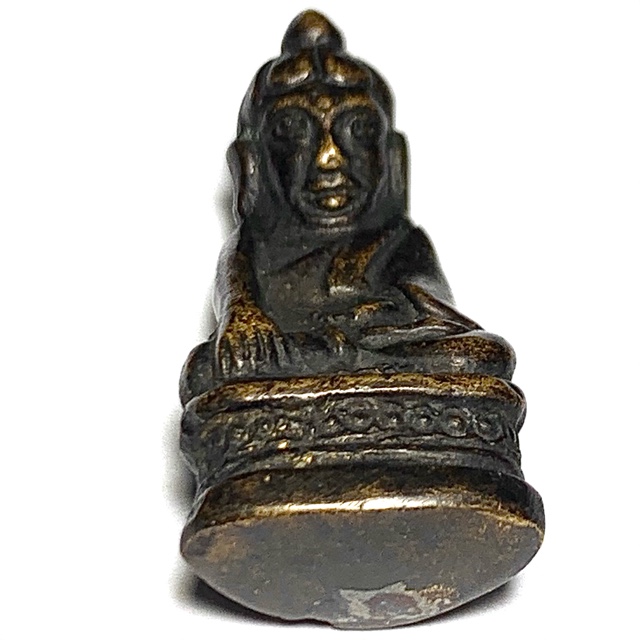
Pra Ajarn Sawai (Abbot of Wat Racha Nadda in Bangkok), was the Monk presiding over the Putta Pisk Ceremony. Before the Forging of the Sacred Chanuan Metallic Alloys, and Casting of the amulets, a host of Gold, Silver and Bronze Yantra Foils were inscribed with Magical Spells in both KHom and Agkhara Lanna script, within ancient Sacred Geometry designs, which were distributed to the most powerful monks around the Nation, and blessed during a whole year, before returning them to Wat Pra Singh, for the forging ceremony, to empower the Sacred Chanuan Metals. T.ese Yantra Foild were smelted together with many other kinds of Sacred Metallic Artifacts,
Amulet Pantheon released in this edition;
- 1. Pra Kring Naresuan Mueang Ngay Nuea Nava Loha (2512 Made). 2 different models were made, the Pim Dto, and the Pim Yom
- 2. Pra Kring Naresuan Mueang Ngay Pim Pised special model (9 made)
- 3. Pra Chayawat Naresuan Mueang Ngay Nuea Nava Loha (2512 made)
- 4. Pra Ruang Rang Pern Nuea Tong Daeng Rom Dam (95,000 made)
- 5. Pra Ruang Rang Rang Pern Pimp Hlang Baeb (2 sided version), which were made in numbers of only 2000 amulets.
Rian Somdej Naresuan Maharat Nuea Tong Daeng Rom Dam, and Nuea Tong Daeng Phiw Fai (100,000 made, with much less being made in Nuea Tong Daeng Rom Dam, making these versions rarer).
There were also the following models released for donation to the 33rd Regimental Army Legion;
- 1. Pra Putta Sihingk 5, 7, 9, and 12 inch wide lap Bucha Statues. These Bucha statues were made in 2 different Sacred Chanuan substances 1. Nuea Sam Gasat (Gold, Silver and Bronze), and in Nuea Samrit (Bronze Alchemical Alloy)(, which were only made in limited numbers, according to how many pre orders were made.
- 2. Pra Put Chiang Saen Singh Bucha Statue 5 inches wide lap in Nuea Sam Kasat.
- 3. Badtr Nam Pra Putta Mont in Nuea Tong Daem Rom Dam Blackened Copper Alloy, composed of a Holy Water Bowl, Embellished Lid, with a Pra Kring Upakut Buddha amulet embeded within the Holy Water Bowl. There were two different kinds of lids made for the Badtr Nam Mont; 1. With Pra Kring inserted 2. With Lotus Flower Embossed. Only 100 of these Sacred Holy Water-Making bowls were made in total.
- 4. Pra Kring Upakut, in Nuea Tong Lueang Rom Dam Sacred Brass Alchemicl Blackened Alloy.
- 5. Pra Sivali 2 Inch High Statuettes, in Nuea Tong Lueang Sacred Brass.
- 6. Rian Pra Jao Kawila in Nuea Tong Daeng Rom Dam.
This model is one of the rarer models to find, as they belonged to the special set set apart for donation to Thai Official Officers of the Regimental Army, and so very few ever fell out of the possession of the people who received one from the temple, allowing serious devotees and collectors to be able to obtain one.
